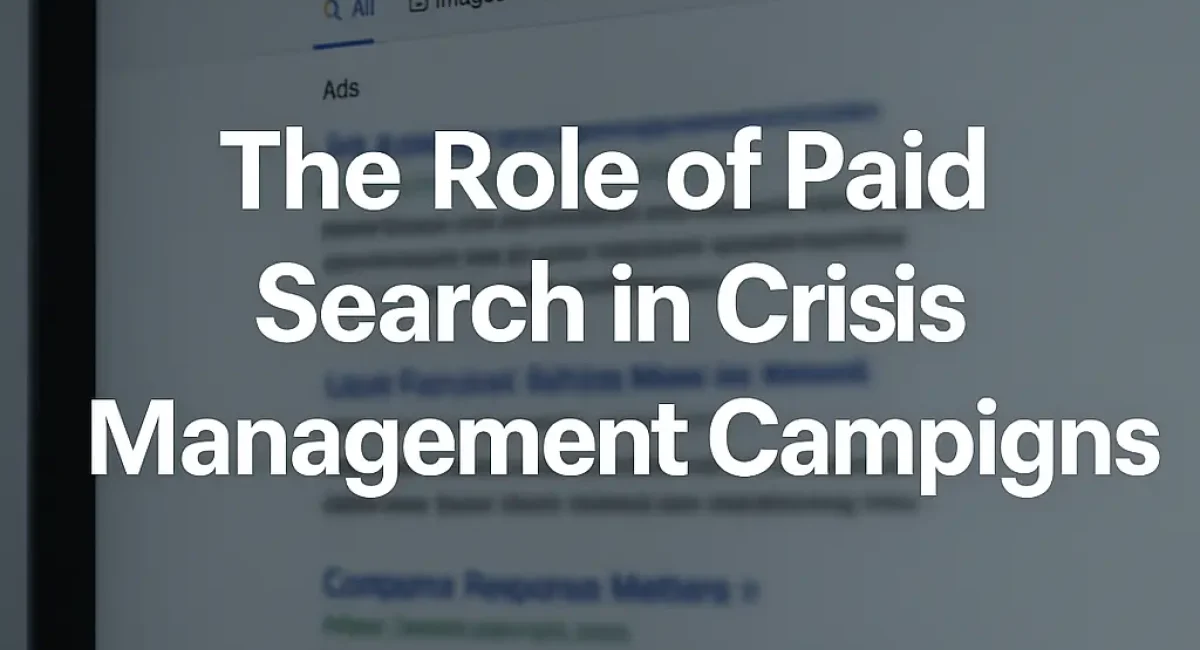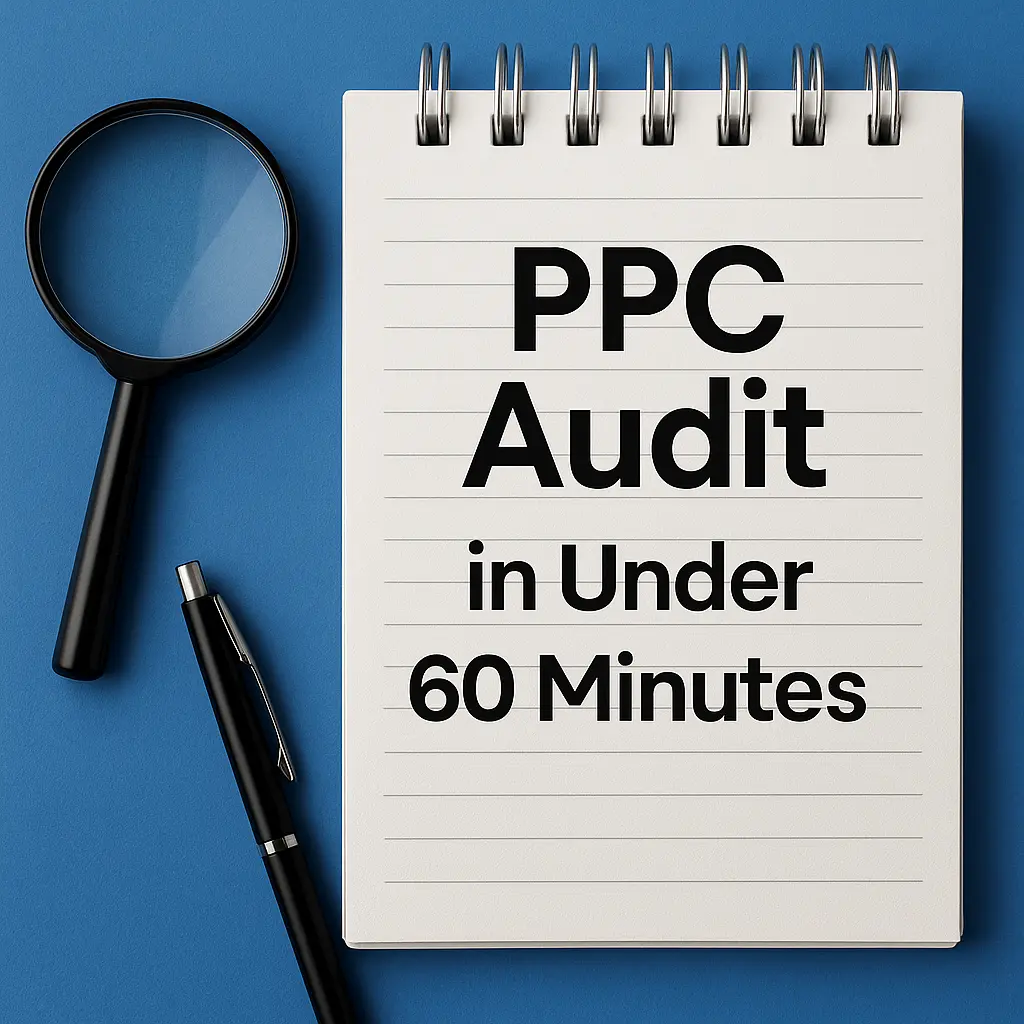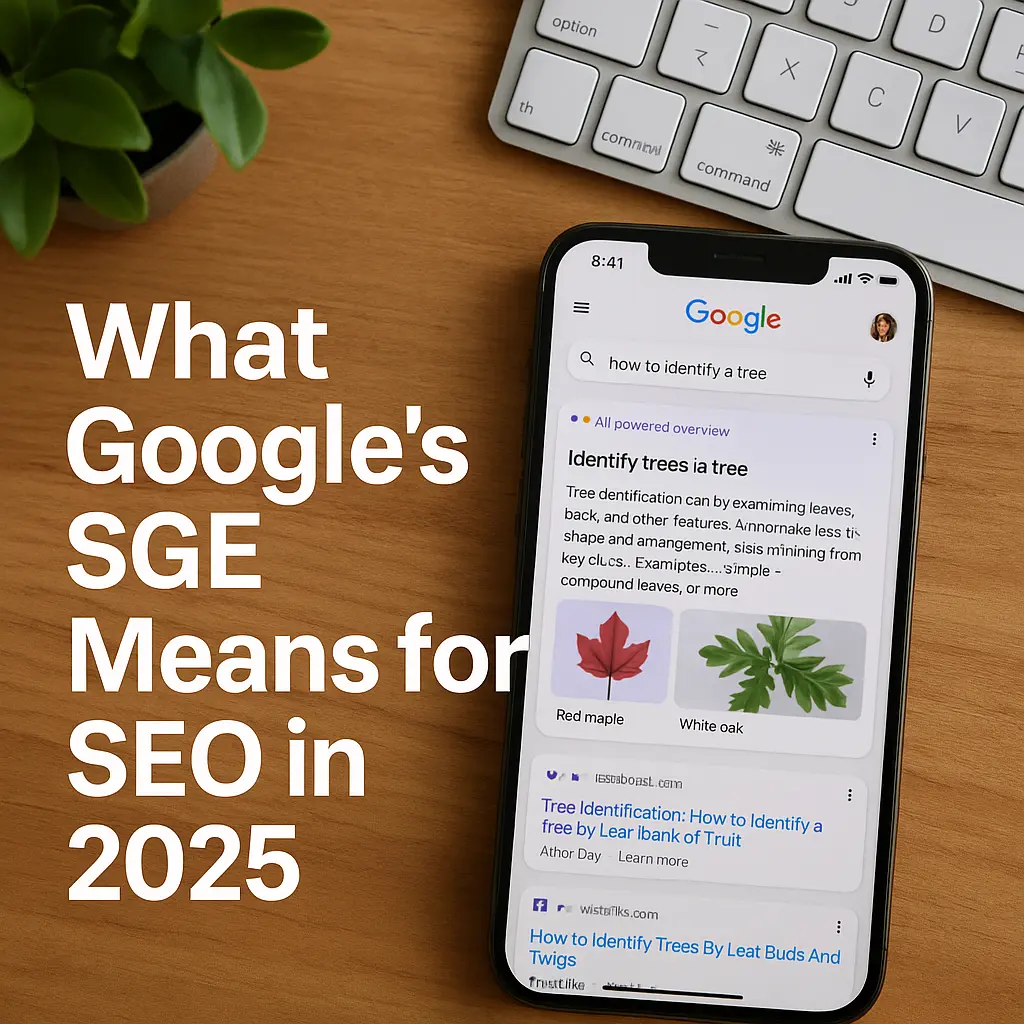Introduction
In today’s hyper-connected world, a single negative headline, viral social media post, or customer complaint can spiral into a full-blown public relations disaster. For brands, managing perception during such crises is not just about damage control—it’s about reclaiming the narrative. This is where paid search and digital advertising come into play as powerful tools for reputation management. By leveraging platforms like Google Ads and Meta Ads, companies can respond swiftly, target crisis-related conversations, and steer audiences toward carefully crafted messages.
Whether a company is facing lawsuits, data breaches, or viral customer backlash, paid search offers a direct line to shape public perception. This article dives deep into the role of paid search in crisis management campaigns, exploring how performance marketers can use crisis PPC strategies to protect brand safety and mitigate damage. From targeting negative search terms to creating reputation management ads, we’ll uncover actionable insights and best practices to navigate turbulent times.
Understanding Crisis in Paid Search
What Constitutes a PR Crisis?
A PR crisis can take many forms—product recalls, executive scandals, customer service failures, or legal disputes. These events often gain traction online, influencing search behavior as consumers seek information. During such times, search engines become battlegrounds for brand perception, where negative news articles or competitor opportunism can dominate results.
Paid search allows brands to insert themselves into these conversations proactively. By bidding on keywords tied to the crisis, companies can ensure their perspective is visible, preventing misinformation from spreading unchecked. This approach is often referred to as paid crisis response, a critical component of modern PR strategies.
The Intersection of Paid Search and Reputation
Paid search intersects with reputation management by offering control over what users see when searching for crisis-related terms. Unlike organic search, which takes time to influence, paid ads provide immediate visibility. This speed is crucial during a crisis when every minute counts.
For instance, if a brand faces a data breach, searches for “[brand name] breach” might spike. Paid search campaigns can direct users to a dedicated landing page explaining the situation, outlining remedial actions, and rebuilding trust. Without this intervention, users might only encounter negative press or unverified sources.
Why Paid Search Matters in Crisis Management
Speed and Control in Messaging
During a crisis, controlling the narrative is paramount. Paid search provides unmatched speed, enabling brands to publish ads within hours of an incident. This immediacy allows companies to address concerns before rumors or negative sentiment solidify in the public mind.
Moreover, paid ads offer precision in messaging. Marketers can craft headlines and descriptions that align with the company’s stance, ensuring consistency across touchpoints. This level of control is essential for maintaining brand safety in volatile situations.
Targeting the Right Audience at the Right Time
Crisis management requires reaching specific audiences—concerned customers, media outlets, or stakeholders. Paid search platforms like Google Ads allow for granular targeting, such as location-based ads for regional crises or demographic targeting for affected customer segments.
Additionally, timing plays a critical role. By monitoring search volume trends and setting up real-time campaigns, brands can respond as soon as crisis-related queries spike, ensuring their message reaches those actively seeking answers.
Preventing Brand Hijacking
During a crisis, competitors or opportunists may attempt to capitalize on a brand’s misfortune by bidding on related keywords. This practice, known as brand hijacking, can divert traffic away from the brand’s owned channels. Paid search counters this by allowing companies to secure top ad placements for their own keywords, safeguarding visibility and trust.
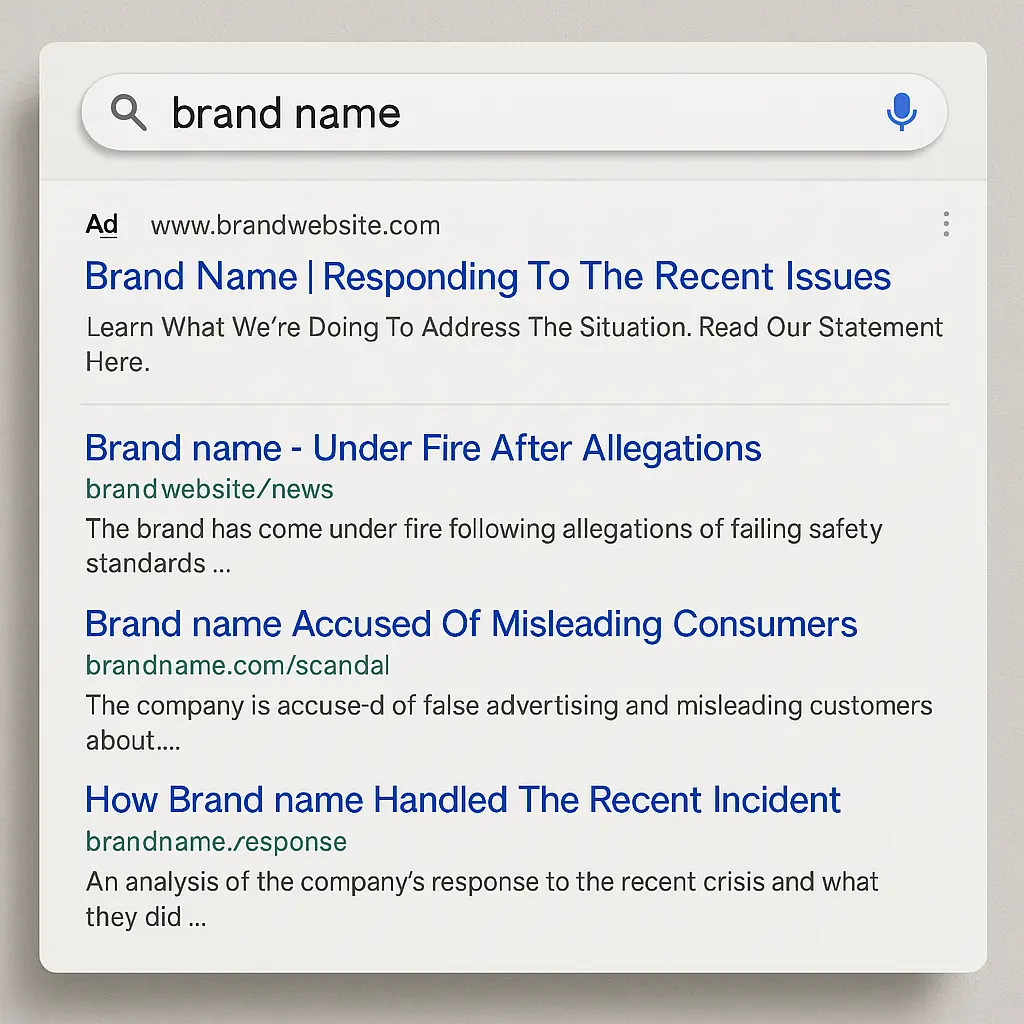
Strategies for Effective Crisis PPC
Keyword Research and Targeting
The foundation of any crisis PPC campaign lies in identifying relevant keywords. Brands must anticipate what users will search for during a crisis, including negative or speculative terms. Tools like Google Keyword Planner or SEMrush can help uncover high-volume queries related to the incident.
Here are some steps to build a crisis keyword list:
- Monitor real-time search trends using Google Trends.
- Include brand-specific terms paired with crisis words (e.g., “[brand] scandal,” “[brand] lawsuit”).
- Target broad match and phrase match keywords to capture variations.
- Use negative search ads to prevent ads from showing on irrelevant or harmful queries.
Creating Dedicated Landing Pages
Directing traffic to generic pages during a crisis can confuse users. Instead, create dedicated landing pages that address the issue head-on. These pages should include a clear statement, FAQs, contact options, and links to further resources.
For example, during a product recall, a landing page might list affected products, safety instructions, and refund processes. Paid ads can drive traffic directly to this page, ensuring users receive accurate information from the source.
Ad Copy Best Practices
Ad copy for crisis campaigns must be empathetic, transparent, and actionable. Avoid defensive or dismissive language, as it can alienate audiences. Instead, focus on acknowledging the issue and offering solutions.
Consider this structure for ad copy:
| Component | Purpose | Example |
|---|---|---|
| Headline | Grab attention and address the issue | “[Brand] Responds to Recent Issue” |
| Description | Provide context and a call to action | “Learn about our response and how we’re addressing concerns. Visit now.” |
| Display URL | Reinforce trust with a branded path | “brand.com/response” |
Budget Allocation and Bid Strategies
Crisis campaigns often require increased budgets to compete for high-demand keywords. Focus on maximizing visibility by using automated bid strategies like “Maximize Clicks” or “Target Impression Share” in Google Ads. Monitor performance closely to adjust bids and avoid overspending on irrelevant clicks.
Tools and Platforms for Crisis Response
Google Ads for Immediate Visibility
Google Ads is the go-to platform for paid crisis response due to its extensive reach and real-time capabilities. Marketers can set up Search campaigns to target crisis keywords, ensuring ads appear above organic results. Features like ad extensions (e.g., callouts, sitelinks) can further enhance messaging by linking to specific resources or contact pages.
For more information, refer to Google’s official guide on Search campaign setup.
Meta Ads for Social Engagement
While Google dominates search, Meta Ads (Facebook and Instagram) play a vital role in engaging social audiences during a crisis. Sponsored posts or Stories can amplify official statements, counter misinformation, and reach users emotionally through visuals or videos.
Meta’s targeting options also allow brands to focus on specific demographics or interest groups affected by the crisis, fostering a sense of community and transparency.
Monitoring Tools for Search Trends
Effective crisis management relies on data. Tools like Google Trends, Brandwatch, or Ahrefs can track search volume spikes and sentiment shifts in real time. These insights help marketers refine keyword lists and adjust campaigns dynamically.
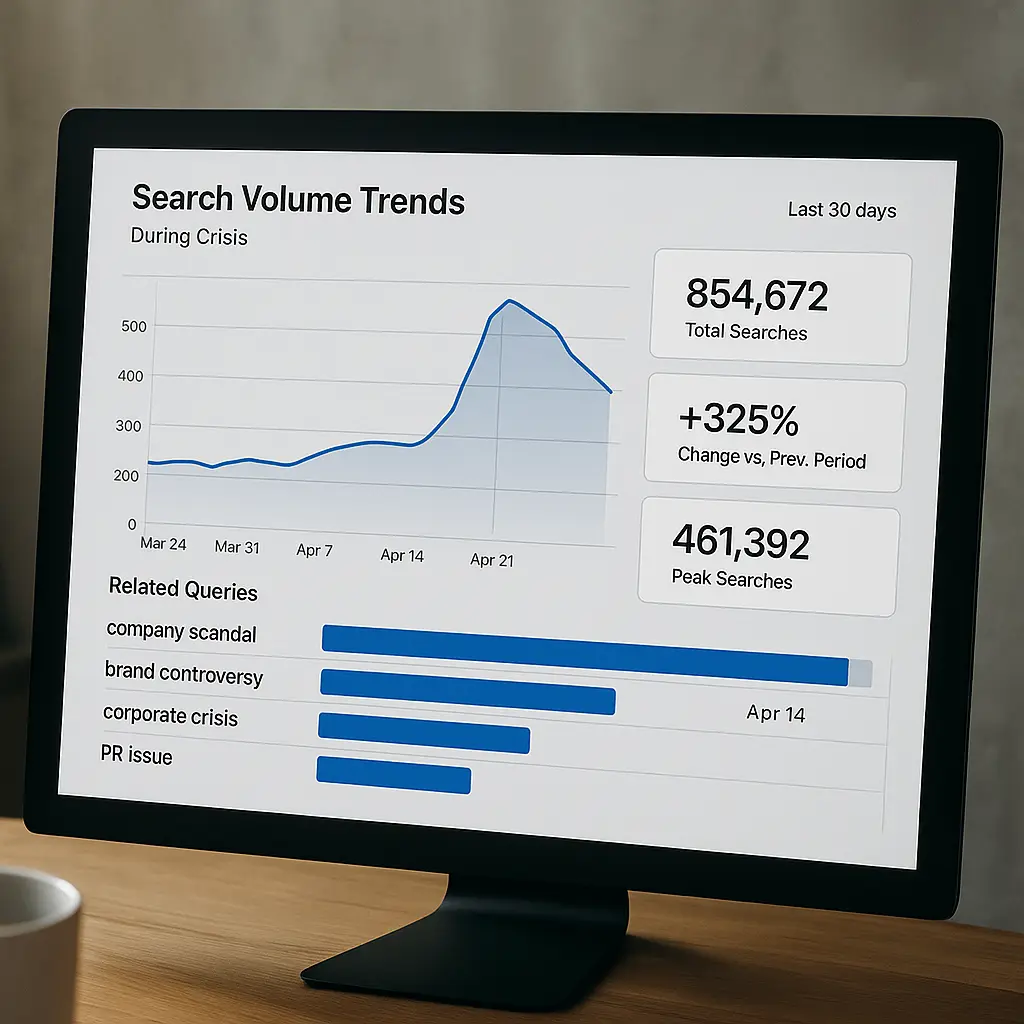
Challenges and Pitfalls to Avoid
Misaligned Messaging
One common pitfall in crisis PPC is inconsistent messaging across channels. If paid ads contradict press releases or social media posts, it can erode trust further. Ensure all teams—marketing, PR, and legal—align on the narrative before launching campaigns.
Overreacting or Underreacting
Finding the right balance in response is challenging. Overreacting with aggressive reputation management ads can seem desperate, while underreacting may signal indifference. Test different ad variations and monitor user sentiment to gauge the appropriate tone.
Ignoring Negative Feedback
Paid search shouldn’t be used to suppress criticism. Blocking negative keywords entirely or redirecting users away from issues can backfire. Instead, address concerns head-on through transparent communication and interactive landing pages.
Budget Overruns
Crisis campaigns can become costly if not managed carefully. Set daily caps and track ROI closely—focus on impressions and click-through rates rather than conversions, as the goal is visibility and trust, not immediate sales.
Case Studies of Successful Crisis Management
Case Study 1: Airline Crisis Response
In 2017, a major airline faced backlash after a viral video showed a passenger being forcibly removed from a flight. The company quickly launched a paid search campaign targeting keywords like “[airline name] incident” and “[airline name] apology.” Ads directed users to a dedicated page with an official statement and compensation offers. This approach helped the airline reclaim visibility and reduce the dominance of negative news in search results.
Case Study 2: Product Recall by a Food Brand
A popular food brand encountered a contamination scare, leading to a nationwide product recall. Using Google Ads, they targeted terms like “[brand] recall” and “[brand] safety,” driving traffic to a page with recall instructions and customer support contacts. Meta Ads complemented this by engaging social audiences with apology videos, resulting in a 30% reduction in negative sentiment within a week.
For further reading on crisis management case studies, explore PRSA’s Crisis Management Resources.
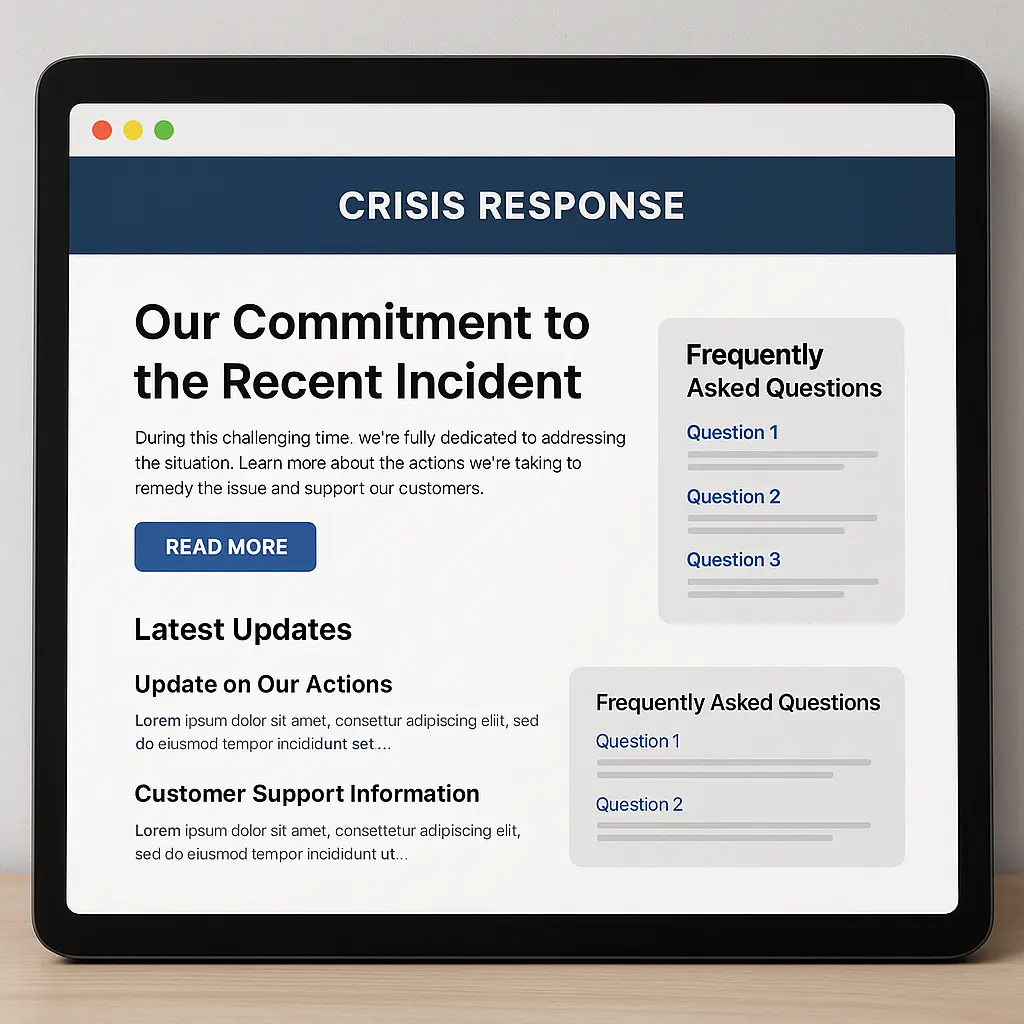
Conclusion
Paid search has emerged as an indispensable tool for crisis management, offering brands a lifeline to control messaging and protect reputation in the face of adversity. From targeting crisis-related keywords to crafting empathetic reputation management ads, platforms like Google Ads and Meta Ads empower marketers to act swiftly and decisively. By prioritizing speed, transparency, and audience engagement, companies can turn a potential PR disaster into an opportunity to rebuild trust.
As digital landscapes continue to evolve, the role of paid search in crisis response will only grow. Future advancements in AI and real-time analytics may further streamline these efforts, allowing brands to predict crises before they escalate. For now, the key lies in preparation—having a crisis PPC playbook ready can make all the difference when the unexpected strikes. So, are you prepared to safeguard your brand’s narrative in the next storm?
Talk to us today to hear about our crisis management services here.
FAQs
How quickly can a paid search campaign be deployed during a crisis?
A paid search campaign can be deployed remarkably quickly during a crisis, often within 2-4 hours of the initial incident. Google Ads campaigns can be created, approved, and live within this timeframe when properly configured and when following platform policies.
According to a 2023 study by Gartner, organizations with pre-approved crisis response templates can reduce deployment time by up to 60% compared to those creating campaigns from scratch. The most efficient companies maintain “dark site” landing pages that can be activated immediately when needed.
However, the speed ultimately depends on several factors: your team’s preparedness, the complexity of the campaign, and whether you have pre-approved messaging ready. Organizations with established crisis communication plans that include paid search elements typically achieve the fastest response times.
What is a typical budget increase needed for crisis PPC campaigns?
During a crisis, companies typically need to increase their PPC budgets by 200-300% above normal levels to ensure adequate visibility and message control. According to a 2022 report by WordStream, crisis-related keywords can see cost-per-click increases of 25-150% due to heightened competition and urgency.
For enterprise brands, this might translate to allocating $50,000-$100,000 in additional PPC spend for a two-week crisis response period. Smaller businesses might need to set aside $5,000-$15,000 for the same timeframe.
It’s worth noting that budget allocation should be front-loaded, with approximately 70% of the crisis budget deployed in the first 72 hours when search interest is typically at its peak. As the crisis subsides, spending can gradually return to normal levels while maintaining coverage on key crisis terms.
How do you measure the success of a crisis management PPC campaign?
Measuring the success of crisis management PPC campaigns requires different metrics than traditional performance marketing. Rather than focusing solely on conversions or ROAS, consider these key performance indicators:
Search impression share: Aim for 80%+ visibility on crisis-related terms to ensure your message is consistently seen. Data from Kantar shows brands maintaining >75% impression share recover 2.3x faster from reputation damage.
Click-through rate (CTR): A healthy CTR (3-5% or higher) indicates your message is resonating and users want your perspective. According to a 2023 Edelman Trust Barometer, direct brand communication is trusted by 54% of consumers during a crisis.
Dwell time on landing pages: Users spending 2+ minutes on your crisis pages suggests they’re engaging with your explanation. Industry benchmarks from Contentsquare show average crisis page engagement of 1:45 minutes.
Sentiment tracking: Use social monitoring tools to track sentiment before and after your campaign launch. A successful campaign should show measurable sentiment improvement within 7-10 days.
Should companies bid on competitors’ crisis keywords as part of their strategy?
Bidding on competitors’ crisis-related keywords raises significant ethical and strategic considerations. While technically possible, this practice is generally discouraged for several reasons:
Ethical concerns: According to a 2023 consumer trust survey by Ipsos, 67% of consumers view brands that capitalize on competitors’ crises negatively. This opportunistic approach can damage your own reputation.
Legal implications: In some jurisdictions, bidding on trademarked terms during a crisis could potentially be seen as unfair business practice. Companies like Interflora and Marks & Spencer have been involved in landmark legal cases around competitive keyword bidding.
Brand safety: Associating your brand with another company’s crisis can create unintended negative associations. Research from MediaMath shows 41% of consumers may develop negative perceptions of brands appearing alongside crisis content.
If you still consider this approach, the safest strategy is to bid on non-branded crisis industry terms (e.g., “data breach protection” rather than “[competitor] data breach”) and offer genuinely helpful information rather than direct competitive messaging.
How long should crisis PPC campaigns remain active after the initial incident?
The duration of crisis PPC campaigns should be data-driven, based on continuous monitoring of search interest and sentiment. According to research by Brandwatch, most corporate crises show a search interest pattern that peaks within 2-3 days and gradually declines over 2-6 weeks.
A good rule of thumb is to maintain high visibility during the acute phase (first 7-14 days) and then scale back gradually based on search volume data. Recent studies from Meltwater show that 60% of crisis-related searches occur within the first two weeks, with long-tail effects continuing for up to 90 days in serious cases.
Many reputation management professionals recommend a phased approach:
Phase 1 (Days 1-14): Maximum coverage with broad messaging addressing the crisis directly
Phase 2 (Weeks 3-8): Focused coverage on specific crisis terms with messaging that transitions to recovery
Phase 3 (Months 3-6): Selective targeting of persistent terms with positive, forward-looking messaging
Regularly check Google Trends data for your crisis terms – when search volume returns to within 20% of pre-crisis levels, you can typically begin phasing out your campaign.
What are the most common legal considerations when running crisis PPC campaigns?
Crisis PPC campaigns navigate complex legal territory and require careful consideration of several factors:
Disclosure requirements: According to FTC guidelines, ads addressing crises must avoid misleading claims. In 2022, the FTC issued $52 million in fines related to deceptive crisis communication. Work with legal counsel to ensure ad copy is factually accurate and doesn’t overpromise solutions.
Securities law implications: For public companies, crisis communication can impact stock prices. The SEC requires material disclosures to be consistent across all channels. A 2021 study found that 23% of investor-related lawsuits cited inconsistent crisis messaging as a contributing factor.
Privacy regulations: Crisis campaigns often collect sensitive user data through landing page forms. Ensure GDPR, CCPA and other privacy compliance, especially when addressing data breaches. Fines for non-compliance can reach up to 4% of annual revenue.
Defamation concerns: Avoid statements that could be construed as defamatory toward third parties involved in the crisis. Recent case law shows an increase in defamation suits stemming from crisis response campaigns.
The safest approach is to establish a crisis response team that includes legal counsel with final approval rights on all ad copy and landing pages before publication.
How should companies integrate PPC with their broader PR and social media crisis response?
Effective crisis management requires seamless integration between paid search, PR, and social media efforts. According to a 2023 Edelman Trust Barometer, organizations with integrated crisis responses see 47% better reputation recovery rates than those with siloed approaches.
Best practices for integration include:
Centralized messaging control: Establish a single source of truth for crisis messaging that feeds all channels. Research by Deloitte shows message consistency across channels increases credibility by 31%.
Real-time information sharing: Create a cross-functional crisis team with representatives from PR, social, and paid media who meet at least daily during active crises. Use collaboration tools like Slack or Teams to share insights in real-time.
Channel-specific optimization: While core messaging should be consistent, optimize delivery for each channel. PPC should focus on answering specific questions, PR on comprehensive statements, and social on engaging dialogue.
Search-informed PR: Use search query data from PPC campaigns to identify public concerns that should be addressed in press releases and statements. According to Cision, PR content that addresses top search queries sees 38% higher engagement.
Closed-loop analytics: Implement UTM parameters and unified reporting to understand how users move between channels during a crisis and which touchpoints are most effective at changing perception.

